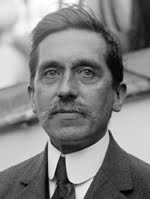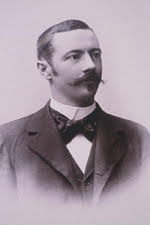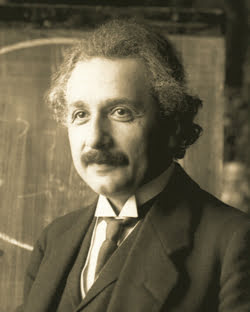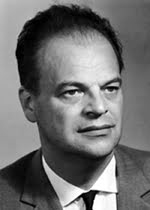For millennia, scholars in the old and new worlds have realized that their efforts depend largely on the works of those who came before. The “eureka!” moments experienced by scientists and other observers of nature do arise, but there must exist first a foundation of knowledge that has been passed down from earlier investigators.
This has never been more true than in the world of laser technology.
It would be shocking to find someone in the field who is unaware of names such as
Maiman, Townes, Schawlow, and Basov, but the pioneering developments of today depend
on the efforts of many more innovators who toiled at the same time, or even earlier.
Entire books have been given over to untangling the web of published
papers, patents (submitted, approved or contested), conference presentations, lab
tests, and handwritten, notarized paper journals that comprise the forensic evidence
of who did what, when. The following is a brief tour of some of the bright lights
who, over the past five decades, have brought the laser to prominence. For a comprehensive
timeline of the laser’s history, see “A History of the Laser.”
Though no one could have known it at the
time, Charles Fabry and Alfred Perot became forever tied to the story of the laser
through the creation of the interferometer in the late 19th century. Two perfectly
parallel mirrors were the key to stimulating both solid and gaseous molecules to
produce an inverted population. Without the Fabry-Perot device, you’re just
exciting particles randomly and to no avail.

Charles Fabry (Library of Congress)
A couple of decades later, in 1917, while
he was tinkering with other concepts that also caused a stir, Albert Einstein became
the first theoretician to stipulate ways in which atoms might interact with photons,
including the practicality of producing the stimulated emission of light.

Alfred Perot (Wikimedia Commons)
Scientists in the US, Europe, and the Soviet
Union picked at the edges of light-and-matter interactions for several years, with
two global wars causing deep distractions. In 1940, the young physicist Valentin
A. Fabrikant of the Moscow Power Institute described how population inversion –
having more molecules excited than not – would necessarily lead to “molecular
amplification,” aka stimulated emission. He applied for a patent (in the USSR)
for “a method for the amplification of electromagnetic radiation,” on
June 18, 1951. The application was rejected at first, but was eventually approved
in 1959 – too late for most of the acclaim he deserved.

Albert Einstein (Wikimedia Commons)
While Fabrikant’s patent churned
through the Soviet bureaucracy, Joseph Weber of the University of Maryland made
the first public description of coherent microwave radiation in 1952.

Nikolai G. Basov (Wikimedia Commons)
Then, from within the heavy-laboring crowd
of microwave specialists, came Charles Hard Townes, who, in 1954, conceived and
built the very first operating maser, using ammonia gas as the excitation material.
He also coined the term, which is an acronym for “microwave amplification
by the stimulated emission of radiation.” Townes, who cut his teeth on microwave
technologies while working for Bell Telephone Laboratories from 1933 to 1947, got
his maser ideas into operation after moving from Bell to Columbia University in
1948. Herbert Zeiger and James Gordon were his assistants on the maser development
project, but he had others, who also went on to carve their niches in the maser
and, ultimately, laser fields. Among these were Isaac Abella, Herman Cummins, Ali
Javan, and Arthur Schawlow.
Arthur L. Schawlow, who ultimately shared
the 1981 Nobel Prize in physics for his breakthroughs in laser-based spectroscopy,
worked very closely with Townes during the hectic early years of masers and lasers.
Not only did they become close friends, but Schawlow married Townes’ sister,
Aurelia.

Alexander M. Prokhorov (Wikimedia Commons)
Among those working feverishly in the nascent
maser field at about the same time period as Townes in 1954 were Alexander M. Prokhorov
and Nikolai Basov of the Lebedev Physics Institute in Moscow. Together, but independently
of Townes, they made pioneering steps toward a working ammonia maser. After Townes,
Zeiger, and Gordon produced the first working model, Prokhorov and Basov theorized
the first three-level maser system. Although they never built a working device,
the concepts they brought forth set up exciting new leaps in several fields, especially
spectroscopy. In 1964, Townes, Prokhorov, and Basov were jointly rewarded with the
Nobel Prize for their maser efforts. Basov later went on to become the first to
apply lasers to the creation and study of thermonuclear plasmas as well as to the
initiation of chemical processes.
Nearly two years later, Nicolaas Bloembergen
of Harvard University produced the second description of a three-level maser, but
this scheme differed in that it used solid matter instead of ammonia gas. Bloembergen,
who had already established himself as the builder of the first operating nuclear
magnetic resonance (NMR) device, used some of those principles to outline the three-level
solid-state maser, but he wasn’t the first to make one. Later, he would share
the 1981 physics Nobel with Schawlow and Kai Siegbahn.
Derrick Scovil, working with George Feher
and Harold Seidel at Bell Telephone Labs, beat Bloembergen to the first operating
three-level maser. The three constructed their device using lanthanum ethyl sulfate
doped with gadolinium ions and published their results in 1957.
Also in 1957, several years before the
first operating laser was turned on, another of Townes’ assistants, Gordon
Gould, coined the term laser, obviously based on maser, with the first letter standing
for “light.” Gould’s coinage, along with his technical notes,
ultimately helped him gain several important patents for the technology 20 years
after the fact. (For more, see “Gordon Gould’s Scientific ‘Patent’ Method,” October 2008 Photonics Spectra.)
Masers, of course, create coherent radiation
out of long microwaves. But even as the technology became established, many scoffed
that you could get the same results with more compact infrared or – heaven
forfend! – visible wavelengths. This didn’t stop others from trying,
with various levels of support or funding. Of those making the wild dash toward
the modern laser, Theodore H. Maiman of Hughes Research Laboratories was the ultimate
“winner of the race.” Maiman built the first laser, using synthetic
pink ruby, in May 1960. From there, the field exploded, as did tempers over who
created the laser.
Within months, research groups all over
were attacking “optical masers.” Ali Javan, whose efforts at Columbia
University and Bell Labs led him to work on three-level masers also, turned his
interest in population inversions within gases into the development of the first
helium-neon laser on Dec. 12, 1960. This was also the first laser to emit coherent
light continuously rather than in pulses. Javan was aided by William R. Bennett
Jr., who moved on to Yale University and the subsequent development of the first
chemical laser, and by Donald R. Herriott.
Since the initial flurry of attempts simply to observe lasing
action, the race has continued in many directions – some toward new useful
laser media, some toward new applications. Perhaps not too astonishingly, most of
the researchers circa 1960 already suspected that coherent light would be a uniquely
potent tool for communication, spectroscopy, imaging, surgery, and even displays.
They did not disappoint.
Written by Lynn Savage (2010).